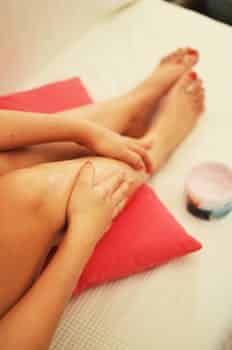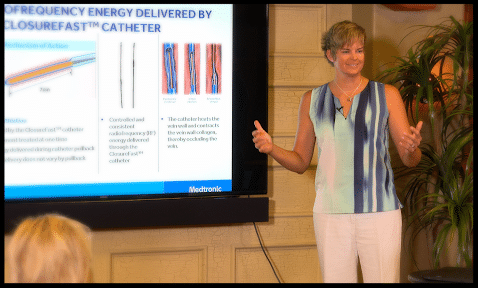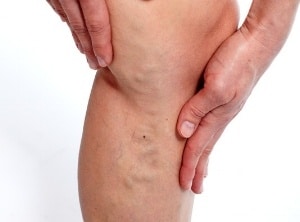
Frustrated with Painful and Unsightly Leg Veins
Painful and unsightly leg veins
With the Arizona heat, a summer day, winter day, or any day is ideal for wearing shorts. But for those with varicose veins or spider veins, the thought of wearing shorts is troubling and leads to severe anxiety. According to the U.S. Department of Health and Human Services, 55% of adult women experience abnormal leg veins as well as 45% of men. If you suffer from varicose veins, you don’t have to resign yourself to living with them if they bother you as there are many ways they can be treated in the office without surgery or painful vein striping.
What are varicose veins? Can varicose veins be prevented? We break it all down for you.
What are varicose veins?
Varicose veins can form when the vein valves that move blood back to the heart weaken and malfunction, resulting in swelling and inflammation. As the valves weaken and no longer keep blood flowing in one direction, the veins become enlarged or stretched due to the abnormal blood flow, blood begins to back up or pool. This often results in bulging, twisted veins with a purple or blue appearance.
Varicose veins most commonly occur in the legs because gravity and other factors make the normal flow of blood returning to the heart more difficult. The lack of circulation and blood pooling means the veins can be painful, make the legs feel heavy or cause a burning, aching, or throbbing sensation.
Why do I have them?
Your genes are the primary factor contributing to your risk for developing varicose veins. When one or both parents have varicose veins, your risk increases. Other contributing factors include pregnancy, obesity, older age, prolonged standing, and physical inactivity.
What do I do about them?
- Physical activity is a great place to start. When we walk, the contraction of the calf muscle helps circulate blood back to our heart, alleviating the build-up that contributes to varicose veins.
- Prescription grade compression socks will also aid with the circulation of blood.
When these aren't enough, new procedures to treat varicose veins are producing excellent results:
- One is the VenaSeal Closure System, which uses medical adhesive and this adhesive is placed in the location along the diseased vein.
- Another is the ClariVein Device, the device uses Mechanico-Chemical Ablation (MOCA). It provokes natural vein spams to produce closure.
- Endovenous ablation is a treatment that uses heat or radiofrequency energy to close off a vein that is not functioning properly, redirecting blood flow through other veins.
- Sclerotherapy uses an injection of a specific chemical to make smaller veins shrink.
Advanced Vein Institute of Arizona
Is there anything worse than itchy varicose veins? Maybe, but itchy veins remains high on the list of issues we would love to resolve before they drive us crazy. If you are experiencing itching around your varicose veins, it could be a message from your body that it is time to have your veins checked…
Read MoreThe full story on Chronic Venous Insufficiency, what it is and how to treat it. A video presentation by Jilanne Rose, DNP-C, Clinical Director. Run Time 24:46. TRANSCRIPT What’s the Difference Between Veins and Arteries? When we talk about vascular health and vascular disease most people think about arteries. When we talk about the…
Read MoreA group of Gilbert Arizona Residents concerned about Chronic Venous Insufficiency gathered on Saturday July 16th for an interactive discussion on CVI symptoms, causes and treatments. Chronic Venous Insufficiency, Venous Reflux Disease and Varicose Veins affect over 30 million American men and women. Unfortunately, many do not get treated as they believe varicose veins are…
Read MoreCan Chronic Venous Insufficiency (CVI) be reversed? Unfortunately the short answer to this question is no; but CVI can be treated with minimally invasive procedures which can reduce symptoms and improve quality of life tremendously! Chronic Vein Insufficiency Causes In order to understand why venous insufficiency or peripheral venous insufficiency cannot be reversed, we must…
Read MoreWhat can you do to treat bleeding varicose vein and spider veins? First and foremost, don’t panic. Although the visual effect of a ruptured varicose vein or bleeding vein can be alarming, there are some simple things that can be done to get the bleeding to stop. If you can reach the area that is…
Read MoreWhy are varicose veins painful? The discomfort associated with varicose veins is caused by a combination of factors. When veins are weak, the blood which is supposed to return to the heart in a timely fashion, settles and pools in the superficial vein system. This pooling of blood worsens when patients stand or sit in…
Read MoreEndovenous Ablation Definition Taken literally, endovenous ablation is the removal of a vein from within. ‘Endo’ means internal or inside, ‘venous’ refers to a vein, and ablation is to ‘remove’. In the instance of veins, it is no longer necessary to physically remove a vein from the leg (vein stripping) to improve symptoms or the…
Read MoreThe newest procedure for the treatment of varicose veins was approved by the FDA about two years ago. It is what has been termed a non-tumescent non-thermal therapy. What this means is that it does not require a lot of numbing medicine to complete, and it does not use a heating element to close or…
Read MoreWhat is the best treatment for varicose veins? No varicose vein is the same; no person’s symptoms are the same; and so the best procedure for varicose veins is not always the same. The treatments associated with vein disease are based on a patient’s symptoms, vein size, location, contributing conditions, and ultrasound findings. Different…
Read More

